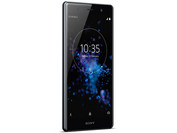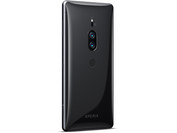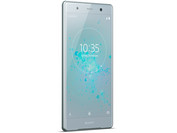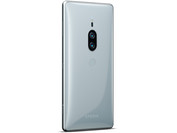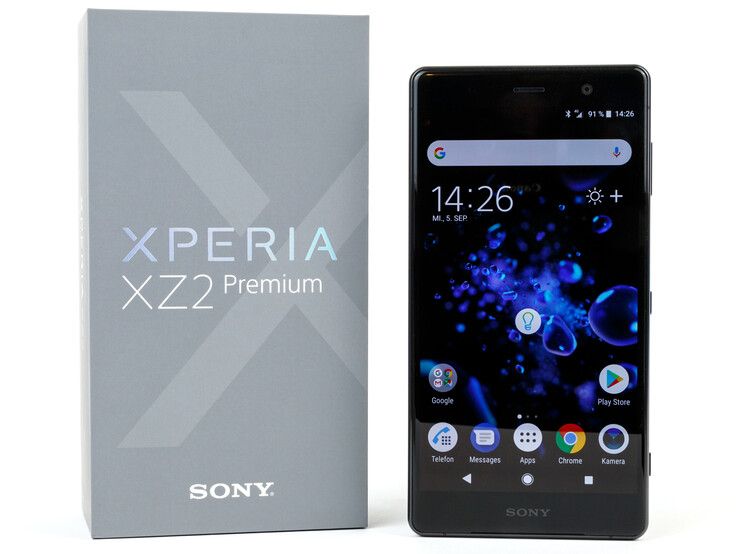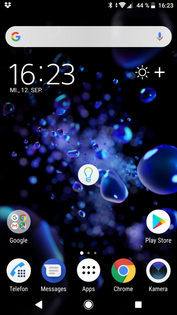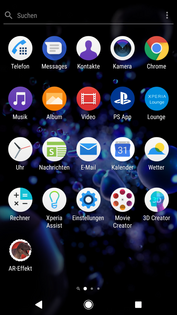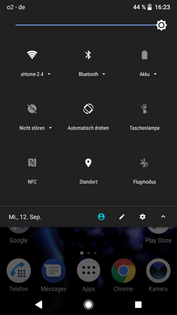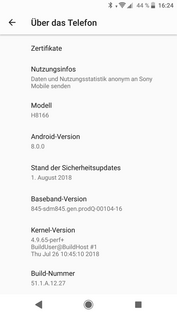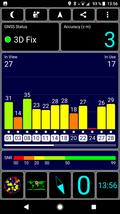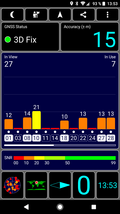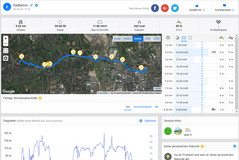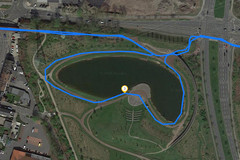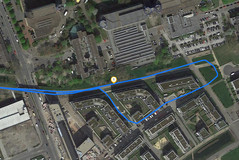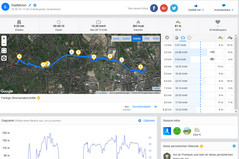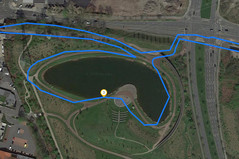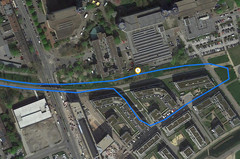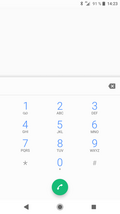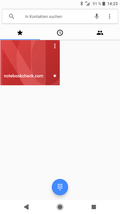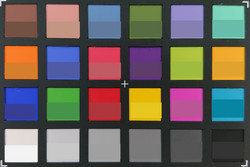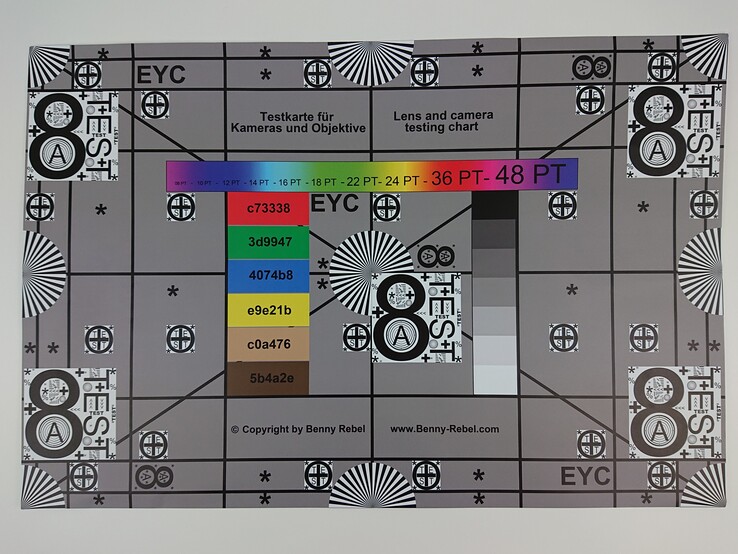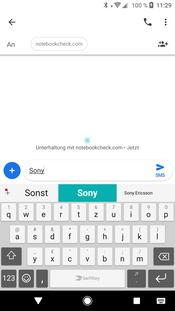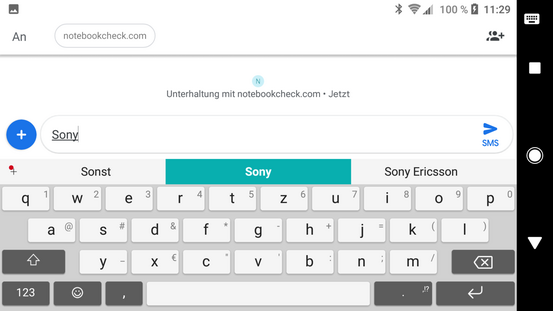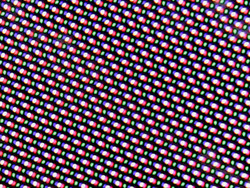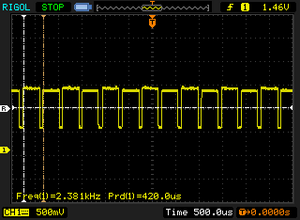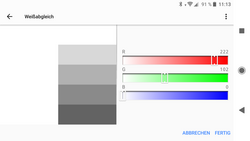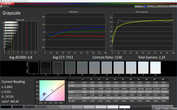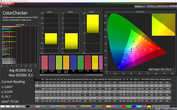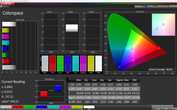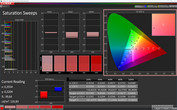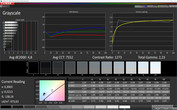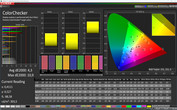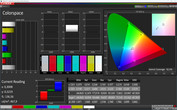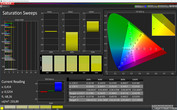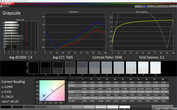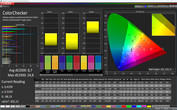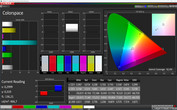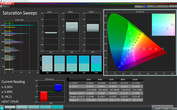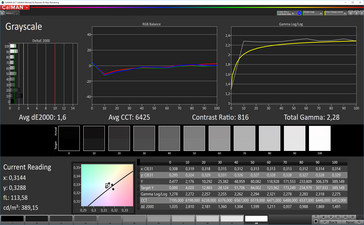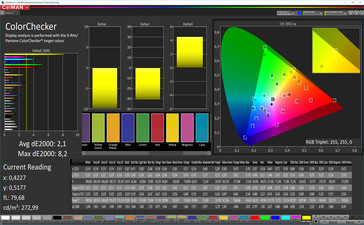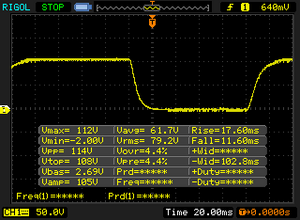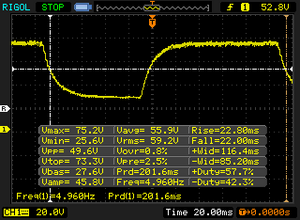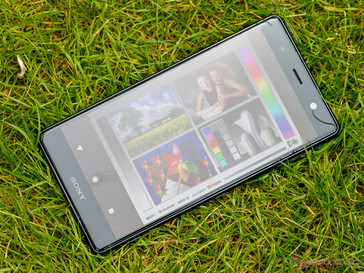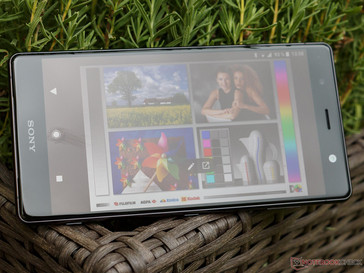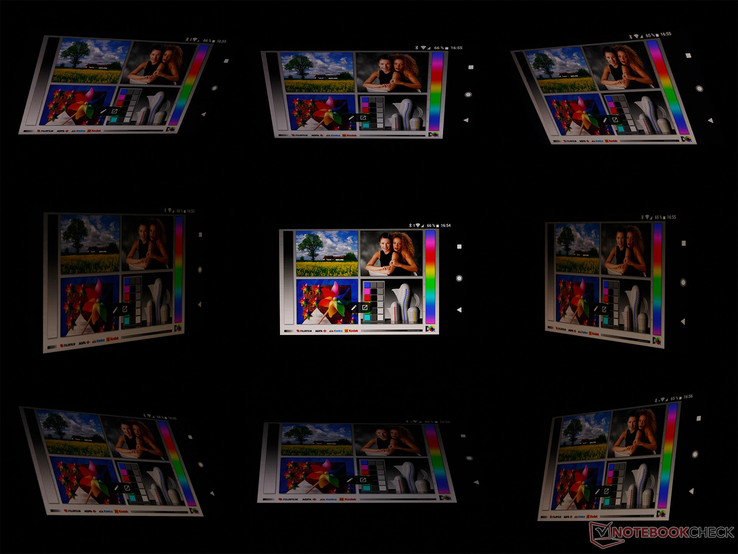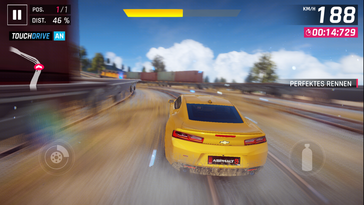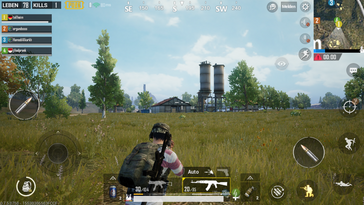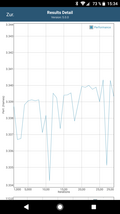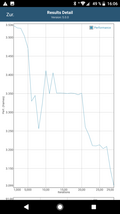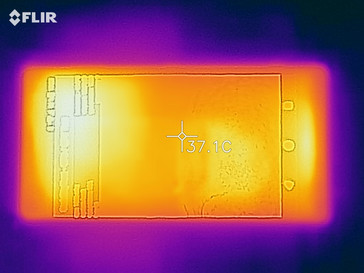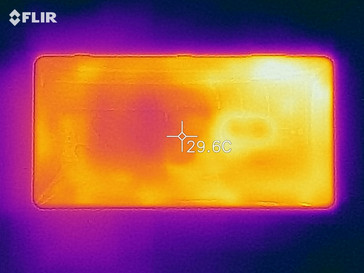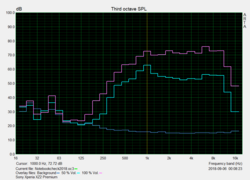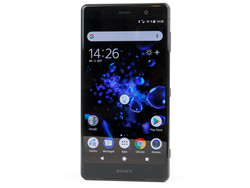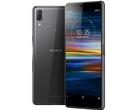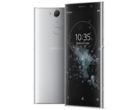Sony Xperia XZ2 Premium Smartphone Review
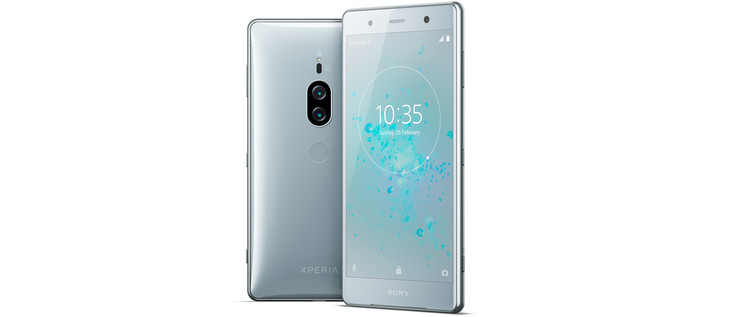
The Sony XZ2 Premium, also known as the Sony H8166, is a visual departure from its predecessor and replicates the design of its XZ2-series siblings. The XZ2 Premium is more a refinement of what made the XZ Premium good rather than being anything revolutionary. Sony equips the XZ2 Premium with 2018 flagship hardware too, including a Qualcomm Snapdragon 845 SoC, 6 GB RAM and 64 GB of UFS 2.1 flash memory. Sony equips the XZ2 Premium with a UHD display that supports HDR just like it did with its predecessor, but the screen size has increased from 5.5 to 5.8-inches. The aspect ratio remains 16:9 though and bucks the trend of the 2:1 aspect ratio devices that other manufacturers have been releasing this year. The XZ2 Premium also supports fast Cat. 18 LTE, Bluetooth 5.0 with aptX HD, stereo speakers and a powerful dual rear-facing camera array. The XZ2 Premium carries a hefty 899-Euro (~$1,048) retail price at launch, which is 150 Euros (~$174) more expensive than Sony initially priced its predecessor.
We have chosen to compare the XZ2 Premium against the following large flagship devices:
- Apple iPhone X (Apple A11 Bionic, 3 GB RAM, 5.8-inch, 64 GB eMMC, 1,149 Euros, ~$1,340)
- HTC U12 Plus (Qualcomm Snapdragon 845, 6 GB RAM, 64 GB UFS 2.1, 799 Euros, ~$931)
- Google Pixel 2 XL (Qualcomm Snapdragon 835, 4 GB RAM, 6-inch, 64 GB UFS 2.0, 939 Euros, ~$1,095)
- Huawei P20 Pro (HiSilicon Kirin 970, 6 GB RAM, 6.1-inch, 128 GB UFS 2.1, 899 Euros, ~$1,048)
- OnePlus 6 (Qualcomm Snapdragon 845, 8 GB RAM, 6.28-inch, 128 GB UFS 2.1, 529 Euros, ~$617)
- Samsung Galaxy S9+ (Samsung Exynos 9810, 6 GB RAM, 6.2-inch, 64 GB UFS 2.1, 949 Euros, ~$1,106)
- Sony Xperia XZ Premium (Qualcomm Snapdragon 835, 4 GB RAM, 5.5-inch, 64 GB UFS 2.0, 749 Euros, ~$873)
Case
The first thing that caught our eye with the XZ2 Premium was its thickness. The device has a highly curved back case that according to Sony makes the XZ2 Premium four millimeters thicker than its predecessor. Our test device is 11.9 mm thick, which is noticeably thicker than all our comparison devices. The XZ2 Premium is heavy at a whopping 236 g, which makes the device over 40 g heavier than its predecessor and considerably heavier than our other comparison devices too.
Our test device feels good in the hand, and the extra heft gives the device a more premium feel than many other devices. Sony has used scratch-resistant Corning Gorilla Glass 5 on both sides of the device and constructed its frame from an aluminum alloy. Incidentally, this looks and feels more like stainless steel than aluminum in our opinion. The XZ2 Premium is a well-constructed device overall and resisted all attempts at bending or twisting it; we could not even get the display to deform either. Likewise, the gaps between materials are small and precise across the entire device.
The XZ2 Premium is IP65 dust and IP68 water-resistant just like its predecessor. Additionally, the combined microSD and SIM-card tray can be opened without any additional tools and accepts either two nano-SIMs or one nano-SIM and one microSD card. It is worth noting that the XZ2 Premium restarts automatically upon removing the card slot, a precautionary step that is unnecessary if you are swapping out a microSD card or removing one of your two nano-SIMs.
At the time of writing the XZ2 Premium is available in either Chrome Black or Silver.
Connectivity
The XZ2 Premium has a USB 3.1 Type-C Gen 1 that transmits data quickly but is unable to transfer video signals. The device therefore cannot connect to an external display via a wired connection. The device supports USB On-The-Go (OTG) though, so you can connect USB peripherals like a keyboard or mouse with the appropriate adapter.
According to Sony, the XZ2 Premium supports up to 400 GB microSD cards, but newer 512 GB cards should work too. While the system supports microSD cards formatted in exFAT, it cannot format cards as internal storage. By default, our test device could not store apps on a microSD card, but there is an option to change this in Developer options.
Sony has included a notification LED too, the customization of which is limited. It is currently only possible to specify what app notifications the LED should display.
Software
The XZ2 Premium ships with Android Oreo 8.0 but Sony announced last month that all XZ2 devices should receive an update to Android Pie 9.0 from November. Historically, Sony has been comparatively reliable at issuing updates to its top smartphones, so we expect that the XZ2 Premium should also see an update to Android Q in due course.
Sony has kept the OS a relatively stock experience except for some additional apps. These include Sony's suite of apps, Facebook, a virus scanner and a few Amazon apps. These can only be disabled and not completely uninstalled. The XZ2 Premium also supports multiple user accounts like many other Android smartphones.
Our test device had the most recent Android security patch installed at the time of testing: Patch level August 1, 2018 for reference.
Communication & GPS
The XZ2 Premium is well equipped to connect to practically any mobile network worldwide. The device supports not only fast Cat. 18 LTE but also an extensive range of 4G and 3G frequencies. Our test device maintained a solid mobile network signal throughout testing too.
The device also supports IEEE 802.11 a/b/g/n/ac Wi-Fi standards and can connect to either 2.4 or 5 GHz networks. Our test device impressed in our Wi-Fi tests with fast transmission speeds, solid network stability and decent range. Our test device achieved over 600 Mb/s in both iperf3 Client Wi-Fi tests, which only the OnePlus 6 also achieved out of our comparison devices.
The XZ2 Premium uses GPS, Glonass, BeiDou, Galileo and QZSS to provide location services. Our test device manages to locate itself within around 14 seconds when tested from a basement and practically immediately when using the device outdoors. Our test device is GPS accurate to three meters outdoors and 15 meters from a basement.
We took the XZ2 Premium on a bike ride to test its location accuracy against a professional navigation device, the Garmin Edge 500. Our test device performed well, matching the total distance that the Garmin measured over a 9.22 km ride. While our test device is impressively accurate in this regard, it could not plot our route as accurately as the Garmin. This difference in route accuracy is clear when comparing the route that both devices plotted around a lake. The XZ2 Premium has us cycling over the lake while the Garmin has plotted our route on the adjacent cycle path. Despite this degree of inaccuracy, the XZ2 Premium should be suitable for all general navigation tasks and even those where higher precision is required.
Telephone Function & Call Quality
The preinstalled contacts and dialer apps are reminiscent of Google equivalents and should be familiar to most Android users.
The voice quality on calls has improved from the XZ Premium, particularly when making a call over the earpiece. Calls are even impressively intelligible over 3G too. The call quality is worse over speakerphone though with voices tending to sound tinny at both ends of a call.
The XZ2 Premium supports Wi-Fi calling (VoWiFi) and voice over LTE (dual VoLTE).
Cameras
Sony has used a similar 13 MP front-facing camera to the one that was used in the XZ Premium. The sensor is relatively sensitive to light and objects look sharp if the autofocus picks them up. Faces look sharp too when the facial recognition works, but there is some occasional blurring in photos. The front-facing camera can also record videos in up to 1920x1080 (Full HD).
The XZ2 Premium has dual rear-facing cameras; one a 19 MP color sensor and the other is a 12 MP monochrome sensor. The latter will also collect more image information in low-light conditions and has greater light sensitivity than the color sensor. This concept is like the one used by Huawei in its P20 Pro. However, the XZ2 Premium uses inferior sensors to those used in the P20 Pro, so the former cannot compete on the latter’s level regarding camera quality. The XZ2 Premium supports high ISO values too, but this does not entirely bridge the gap between the sensors used in our test device and those used in the P20 Pro. It is nice to see Sony still equipping its smartphones with a dedicated camera button though; its inclusion remains a rarity for Android smartphones.
The XZ2 Premium’s rear-facing cameras generally take good photos that contain plenty of details. Outlines of objects tend to lack the same degree of sharpness that the XZ2 Premium’s competitors achieve but the white balance in daylight is accurate. Ambient shots like in Scene 1 demonstrate the color sensor’s high dynamic range and that the sensor cannot quite capture the same level of detail as the P20 Pro can. Incidentally, we also noticed are a few small artefacts in Scene 1.
The XZ2 Premium takes good low-light photos, albeit with some caveats. While objects are exposed well, and the edges of objects are suitably sharp, there is noticeable image noise across the whole image. The degree of image noise is particularly apparent when comparing the same zoomed sections of Scene 3 with that captured by the P20 Pro. There is considerable noise around the candle, for example, in the photo taken with the XZ2 Premium that is not present in the photo taken with the P20 Pro. Overall, the P20 Pro takes far cleaner shots at night than the XZ2 Premium manages to do.
The XZ2 Premium can record videos in up to UHD resolution with HDR support but only at a maximum of 30 FPS. By contrast, the XZ2 Premium can record video in Full HD at either 30 or 60 FPS. Moreover, the electronic image stabilization works much better when recording in Full HD than at UHD. There is noticeably more blurring and shaking in UHD videos than there is in those recorded at Full HD. Video quality is good overall, but there is considerable image noise in low-light scenes. The XZ2 Premium can also record video in Full HD (1080p) at 960 FPS; this is up from the 720p in which the XZ Premium could record at the same FPS rate.
We also tested the XZ2 Premium’s rear-facing cameras under controlled lighting conditions. Generally, our test device captures colors more brightly than ColorChecker Passport's reference colors, particularly skin tones. These also have a visible red tint to them too.
The XZ2 Premium captures our test chart cleanly with the photo being particularly detailed and sharp at the center of the image. The only downsides are with areas of dark text against a dark background, which our test device struggles to capture accurately, and the uniformity of sharpness across the whole photo. Our test chart looks noticeably blurrier at the edge of the photo than it does towards the center.
Accessories & Warranty
Sony includes a fast charger, a USB Type-A to Type-C cable, a Type-C to 3.5 mm adapter and some headphones in the box. The fast charger is rated at 5 V/2.7 A, 9 V/1.8 A and 12 V/1.35 A. The charger also supports Qualcomm Quick Charge 3.0 and USB Power Delivery (PD) 2.0.
The XZ2 Premium comes with 24 months manufacturer’s warranty; this cannot be extended. Please see our Guarantees, Return policies and Warranties FAQ for country-specific information.
Input Devices & Operation
The XZ2 Premium has a 10-point multitouch display that remained precise throughout testing. The display has a smooth finish on which it was easy to make swiping motions with our fingers.
Our test device came with Sony’s own keyboard preinstalled. While this is easy to use and has plenty of features, you could replace it with other keyboard apps from the Google Play Store should you prefer.
The fingerprint sensor is on the back of the device, which is a change from the XZ Premium and other XZ devices with their combined fingerprint scanner and power button. The XZ2 Premium’s fingerprint sensor should be far enough away from the rear-facing cameras for users to avoid accidentally hitting the latter rather than the former. However, the sensor is relatively flush against the rear case and has no real indent to it as with the OnePlus 6 or the Galaxy S9+. The lack of indent often makes it difficult to find the sensor when using our test device.
Sony has also introduced something that they are calling dynamic vibration. According to Sony, the vibration motor within the XZ2 Premium is designed to enhance the audio experience when listening to music or when watching videos. This feature has three levels that provide increasingly stronger feedback without ever being too loud. You could deactivate dynamic vibration if you prefer too. Overall, this is more than just a gimmick and one which we liked; it is a shame that it is limited to just music and videos.
Display
Sony has noticeably shrunk the XZ2 Premium’s bezels when comparing the device with its predecessor. The XZ2 Premium has a 5.8-inch display and is 0.3-inches larger than the XZ Premium despite being only 2 mm wider and 3 mm longer. The XZ2 Premium maintains the 16:9 aspect ratio we saw with the XZ Premium, which makes sense from a practical viewpoint. Most media content is recorded in 16:9, so having a smartphone with a 16:9 aspect ratio display means that content will fill the display rather than having black bars either side of videos as with smartphones that have a 2:1 aspect ratio.
The 5.8-inch display runs at a native 3840x2160 resolution, also referred to as Ultra HD, UHD or 4K. This resolution remains practically unmatched despite the XZ2 Premium being the third generation of premium Xperia smartphones that feature a 4K display. Sony first introduced 4K smartphones with the Xperia Z5 Premium in 2015.
The XZ2 Premium’s display has a whopping pixel density of 760 PPI, although this is slightly lower than that of its predecessor. Moreover, the device only utilizes its high pixel density when displaying videos. According to Sony, the XZ2 Premium should be able to stream content in 4K from Amazon, Netflix and YouTube as they all now offer content at that resolution. However, we could only get YouTube to play videos at 4K while Amazon and Netflix would only play at a maximum of Full HD with HDR. We will update this review accordingly if Sony states that this should work.
Sony has not only increased the display size for the XZ2 Premium but also added a white pixel to the device’s display. The XZ2 Premium therefore has an RGBW sub-pixel structure compared to the XZ Premium’s RGB sub-pixel structure.
Our test device reached an average maximum brightness of 453 cd/m² when measured with X-Rite i1Pro 2 and 477 cd/m² at the center of the display. This maximum value remained the same with either auto or manual brightness activated. This maximum brightness value is around half the luminosity that Sony claims the XZ2 Premium can reach and 25% darker than the average maximum brightness of its predecessor. Likewise, the Galaxy S9+, iPhone X and P20 Pro all have over 20% brighter displays than the XZ2 Premium. It is possible that Sony limits this alleged 900 cd/m² potential maximum brightness to just HDR content though.
Our test device also has 86% brightness uniformity, which is lower than all our comparison devices. We did not notice any brightness differences across the display throughout testing, so we doubt that this would be an issue for most people in daily use.
It is disappointing to see Sony still uses pulse-width modulation (PWM) to regulate display brightness though. We measure PWM at 2,381 Hz for brightness levels at 31% luminosity and below. This frequency should be high enough not to trouble even those who are PWM sensitive, but that is not guaranteed.
Our test device also has a 0.33 cd/m² black value, which helps the device achieve a respectable 1,445:1 contrast ratio. These values are much better than those of our other LCD IPS-equipped comparison devices. In short, the XZ2 Premium should display deeper blacks and more vivid colors than the HTC U12 Plus and its predecessor.
| |||||||||||||||||||||||||
Brightness Distribution: 86 %
Center on Battery: 477 cd/m²
Contrast: 1445:1 (Black: 0.33 cd/m²)
ΔE ColorChecker Calman: 2.1 | ∀{0.5-29.43 Ø4.77}
ΔE Greyscale Calman: 1.6 | ∀{0.09-98 Ø5}
98.6% sRGB (Calman 2D)
Gamma: 2.28
CCT: 6425 K
| Sony Xperia XZ2 Premium LCD-IPS, 3840x2160, 5.8" | Sony Xperia XZ Premium IPS, 3840x2160, 5.5" | Samsung Galaxy S9 Plus Super AMOLED, 2960x1440, 6.2" | Apple iPhone X Super AMOLED, 2436x1125, 5.8" | Huawei P20 Pro OLED, 2240x1080, 6.1" | OnePlus 6 Optic AMOLED, 2280x1080, 6.3" | Google Pixel 2 XL P-OLED, 2880x1440, 6" | HTC U12 Plus Super LCD 6, 2880x1440, 6" | |
|---|---|---|---|---|---|---|---|---|
| Screen | -18% | 11% | 29% | 28% | -5% | -18% | 7% | |
| Brightness middle (cd/m²) | 477 | 578 21% | 565 18% | 600 26% | 569 19% | 430 -10% | 415 -13% | 395 -17% |
| Brightness (cd/m²) | 453 | 568 25% | 571 26% | 606 34% | 578 28% | 437 -4% | 420 -7% | 402 -11% |
| Brightness Distribution (%) | 86 | 92 7% | 96 12% | 94 9% | 95 10% | 87 1% | 87 1% | 90 5% |
| Black Level * (cd/m²) | 0.33 | 0.62 -88% | 0.37 -12% | |||||
| Contrast (:1) | 1445 | 932 -36% | 1068 -26% | |||||
| Colorchecker dE 2000 * | 2.1 | 2.8 -33% | 2.3 -10% | 1.2 43% | 1.3 38% | 2.3 -10% | 2.7 -29% | 1.6 24% |
| Colorchecker dE 2000 max. * | 8.2 | 5.1 38% | 4.8 41% | 3 63% | 2.1 74% | 4.6 44% | 4.3 48% | 3.4 59% |
| Greyscale dE 2000 * | 1.6 | 2.8 -75% | 1.9 -19% | 1.6 -0% | 1.6 -0% | 2.4 -50% | 3.3 -106% | 1.1 31% |
| Gamma | 2.28 96% | 2.15 102% | 2.16 102% | 2.23 99% | 2.31 95% | 2.28 96% | 2.36 93% | 2.14 103% |
| CCT | 6425 101% | 6728 97% | 6332 103% | 6707 97% | 6401 102% | 6160 106% | 6787 96% | 6536 99% |
* ... smaller is better
Screen Flickering / PWM (Pulse-Width Modulation)
| Screen flickering / PWM detected | 2381 Hz | ≤ 31 % brightness setting | |
The display backlight flickers at 2381 Hz (worst case, e.g., utilizing PWM) Flickering detected at a brightness setting of 31 % and below. There should be no flickering or PWM above this brightness setting. The frequency of 2381 Hz is quite high, so most users sensitive to PWM should not notice any flickering. In comparison: 53 % of all tested devices do not use PWM to dim the display. If PWM was detected, an average of 8081 (minimum: 5 - maximum: 343500) Hz was measured. | |||
We also checked the color accuracy of the XZ2 Premium’s display with a photo spectrometer and CalMAN analysis software. The XZ2 Premium has three display modes just like its predecessor. The standard mode is the default; Sony has based this mode and the super-vivid mode on the DCI-P3 color space. The third display mode is called professional and represents the narrower sRGB color space. The deviations from the target color space are lowest in standard and professional modes, but all three modes have a slight blue tint to them. We would recommend manually setting the white balance for more natural color reproduction. We optimized our test device’s white balance having set the display to standard mode because of its larger color gamut. We have included our settings in the screenshot here.
Delta E divergences are much closer to their ideal values after our calibration. We then measured gray levels at an excellent 1.6, while even the largest deviation, 10% gray at 2.8 dE, is hardly noticeable to the naked eye. This additional calibration will help makes colors look more natural in daily use, but they will still look good in daily use; the higher dE values are noticeable to the trained eye but not disturbingly so.
Display Response Times
| ↔ Response Time Black to White | ||
|---|---|---|
| 29.2 ms ... rise ↗ and fall ↘ combined | ↗ 17.6 ms rise | |
| ↘ 11.6 ms fall | ||
| The screen shows relatively slow response rates in our tests and may be too slow for gamers. In comparison, all tested devices range from 0.1 (minimum) to 240 (maximum) ms. » 77 % of all devices are better. This means that the measured response time is worse than the average of all tested devices (20.2 ms). | ||
| ↔ Response Time 50% Grey to 80% Grey | ||
| 44.8 ms ... rise ↗ and fall ↘ combined | ↗ 22.8 ms rise | |
| ↘ 22 ms fall | ||
| The screen shows slow response rates in our tests and will be unsatisfactory for gamers. In comparison, all tested devices range from 0.165 (minimum) to 636 (maximum) ms. » 75 % of all devices are better. This means that the measured response time is worse than the average of all tested devices (31.6 ms). | ||
The XZ2 Premium is usable outdoors, but we struggled to read the display in direct sunlight on a bright day. The display has a glossy finish which attracts reflections, and the maximum display luminosity is too low to use the device comfortably on a sunny day. The maximum brightness is high enough to use the XZ2 Premium outside on a cloudy day though.
The ambient light sensor quickly and reliably altered display brightness to the changing ambient light.
Our test device has strong viewing angles and does not exhibit any ghosting, glowing effects or color distortions even at acute viewing angles. However, the display brightness does reduce comparatively quickly at tight angles. Additionally, the color temperature is warmer when looking at the display from any angle other than dead center.
Performance
The Qualcomm Snapdragon 845 SoC powers the XZ2 Premium, which is currently Qualcomm’s best smartphone chip. The Snapdragon 845 integrates a Qualcomm Kyro 385 CPU and a Qualcomm Adreno 630 GPU among other components. Sony complements the powerful SoC with 6 GB of LPDDR4x RAM.
Our test device performs on par with other Snapdragon 845-powered devices in CPU and GPU benchmarks. The XZ2 Premium keeps pace with its competitors in visual benchmarks too as these are all rendered at a maximum of Full HD. PCMark benchmark results confirm our subjective impression that the XZ2 Premium has fast system performance too; our test device is only definitively beaten by the HTC U12 Plus in the Work 2.0 PCMark for Android benchmark and is on par with the OnePlus 6.
| Lightmark - 1920x1080 1080p (sort by value) | |
| Huawei P20 Pro | |
| Google Pixel 2 XL | |
| Samsung Galaxy S9 Plus | |
| Basemark ES 3.1 / Metal - offscreen Overall Score (sort by value) | |
| Huawei P20 Pro | |
| Apple iPhone X | |
| OnePlus 6 | |
| Google Pixel 2 XL | |
| Samsung Galaxy S9 Plus | |
| Average Qualcomm Snapdragon 845 (1169 - 1201, n=5) | |
| Average of class Smartphone (205 - 7731, n=34, last 2 years) | |
Our test device’s browser performance is pleasingly fast in daily use. However, the XZ2 Premium finishes only in the midfield of our comparison devices in browser benchmarks, particularly in WebXPRT 2015.
| JetStream 1.1 - Total Score | |
| Apple iPhone X (IOS 11.1.1) | |
| OnePlus 6 (Chrome 66) | |
| HTC U12 Plus (Chrome 66) | |
| Average Qualcomm Snapdragon 845 (22.5 - 90.9, n=25) | |
| Sony Xperia XZ2 Premium (Chrome 68) | |
| Samsung Galaxy S9 Plus (Samsung Browser 7.0) | |
| Google Pixel 2 XL (Chrome 62) | |
| Sony Xperia XZ Premium (Chrome 59) | |
| Huawei P20 Pro (Chrome 65) | |
| Octane V2 - Total Score | |
| Average of class Smartphone (2228 - 126661, n=194, last 2 years) | |
| Apple iPhone X (IOS 11.1.2) | |
| OnePlus 6 (Chrome 66) | |
| HTC U12 Plus (Chrome 66) | |
| Average Qualcomm Snapdragon 845 (3991 - 18275, n=28) | |
| Samsung Galaxy S9 Plus (Samsung Browser 7.0) | |
| Sony Xperia XZ2 Premium (Chrome 68) | |
| Huawei P20 Pro (Chrome 65) | |
| Google Pixel 2 XL (Chrome 62) | |
| Sony Xperia XZ Premium (Chrome 59) | |
| Mozilla Kraken 1.1 - Total | |
| Huawei P20 Pro (Chrome 65) | |
| Google Pixel 2 XL (Chrome 62) | |
| Sony Xperia XZ Premium (Chrome 59) | |
| Sony Xperia XZ2 Premium (Chrome 68) | |
| Average Qualcomm Snapdragon 845 (2154 - 11204, n=28) | |
| OnePlus 6 (Chrome 66) | |
| HTC U12 Plus (Chrome 66) | |
| Samsung Galaxy S9 Plus (Samsung Browser 7.0) | |
| Average of class Smartphone (257 - 28190, n=154, last 2 years) | |
| Apple iPhone X (IOS 11.1.2) | |
| WebXPRT 2015 - Overall | |
| Apple iPhone X (Safari Mobile 11.0) | |
| HTC U12 Plus (Chrome 66) | |
| OnePlus 6 (Chrome 66) | |
| Average Qualcomm Snapdragon 845 (96 - 291, n=23) | |
| Sony Xperia XZ2 Premium (Chrome 68) | |
| Google Pixel 2 XL (Chrome 62) | |
| Huawei P20 Pro (Chrome 65) | |
| Samsung Galaxy S9 Plus (Samsung Browser 7.0) | |
| Sony Xperia XZ Premium (Chrome 59) | |
* ... smaller is better
The Xperia XZ2 Premium is only available with 64 GB of UFS 2.1 memory. We would have preferred to see 128 GB of storage given the XZ2 Premium’s price, but microSD card expansion has the potential to rectify this relative lack of storage. Unfortunately, microSD card performance is poor. We tested the XZ2 Premium with our Toshiba Exceria Pro M501 microSD card as we did with our comparison devices, but our test device is well beaten by the Galaxy S9+ in AndroBench 3-5.
| Sony Xperia XZ2 Premium | Sony Xperia XZ Premium | Samsung Galaxy S9 Plus | OnePlus 6 | Google Pixel 2 XL | Huawei P20 Pro | Average 64 GB UFS 2.1 Flash | Average of class Smartphone | |
|---|---|---|---|---|---|---|---|---|
| AndroBench 3-5 | -7% | 47% | 4% | 6% | 168% | 81% | 697% | |
| Sequential Read 256KB (MB/s) | 749 | 687 -8% | 819 9% | 726 -3% | 760 1% | 832 11% | 696 ? -7% | 2235 ? 198% |
| Sequential Write 256KB (MB/s) | 171 | 194 13% | 204.9 20% | 201.4 18% | 195.3 14% | 196.7 15% | 224 ? 31% | 1871 ? 994% |
| Random Read 4KB (MB/s) | 136 | 74.1 -46% | 129.7 -5% | 137 1% | 170.6 25% | 144.3 6% | 137.2 ? 1% | 297 ? 118% |
| Random Write 4KB (MB/s) | 21.75 | 17.2 -21% | 22.74 5% | 21.8 0% | 17.84 -18% | 160.5 638% | 84.7 ? 289% | 343 ? 1477% |
| Sequential Read 256KB SDCard (MB/s) | 34.18 ? | 36.79 ? 8% | 79.2 ? 132% | 68.6 ? 101% | ||||
| Sequential Write 256KB SDCard (MB/s) | 30.23 ? | 33.31 ? 10% | 67.2 ? 122% | 52.2 ? 73% |
Games
The Qualcomm Adreno 630 handles graphics and delivers impressive performance in games. Games are displayed at a maximum of Full HD rather than 4K to preserve performance. Our test device plays demanding games like PUBG Mobile at consistently high frame rates. We measured FPS with GameBench for reference. The large display offers a wide field of view when playing games, which is particularly helpful in first-person shooters.
The stereo speakers provide great sound during games while the touchscreen remained responsive throughout testing and the sensors worked without issue. Sony does not advertise the XZ2 Premium as a gaming phone, but its design and hardware bring plenty to the table. It is a pity that dynamic vibration cannot currently be used in games though.
The XZ2 Premium also supports PlayStation 4 Remote Play, which allows games to be streamed from a PS4 and played on an XZ2 Premium. Both devices must be connected to the same Wi-Fi network for this to work. We recommend buying the Sony Game Control Mount GCM10, so you can connect the XZ2 Premium to a Dualshock 4 Wireless Controller. The GCM10 costs around 25 Euros (~$29) at the time of writing.
| PUBG Mobile | |||
| Settings | Value | ||
| HD | 40 fps | ||
| Asphalt 9: Legends | |||
| Settings | Value | ||
| High Quality | 30 fps | ||
| Standard / low | 30 fps | ||
Emissions
Temperature
The XZ2 Premium’s surface temperatures are relatively cool at idle but the bottom third of the front of the device averages a toasty 34.8 °C. Predictably, the XZ2 Premium gets hotter when subjected to sustained load, but all areas of the device remain below 40 °C. Incidentally, the back of the device averages around 3-4 °C lower than the front either at idle or under load.
We also checked internal temperatures by running the GFXBench battery test for 30 times on a loop. We measured both the battery level and frame rates as they changed throughout the looped benchmark. Performance remains stable in the T-Rex benchmark which uses OpenGL ES 2.0 but not so in the newer Manhattan benchmark that utilizes OpenGL ES 3.1. During this benchmark, performance drops initially by 8% with performance being around 13% down by the end of the loop.
(+) The maximum temperature on the upper side is 39.5 °C / 103 F, compared to the average of 35.2 °C / 95 F, ranging from 21.9 to 247 °C for the class Smartphone.
(+) The bottom heats up to a maximum of 36 °C / 97 F, compared to the average of 34 °C / 93 F
(±) In idle usage, the average temperature for the upper side is 32.4 °C / 90 F, compared to the device average of 32.9 °C / 91 F.
Speakers
The XZ2 Premium has two front-firing speakers that sound good, albeit somewhat dull. Moreover, medium volume voices are too present in the sound mix for our liking.
Unfortunately, the XZ2 Premium lacks a 3.5 mm jack, but Sony does include a USB Type-C adapter in the box. Our test device recognized headphones that we connected via Samsung and Huawei USB Type-C adapters too. The XZ2 Premium also supports Hi-Res Audio and ClearAudio+.
Wireless headphones and speakers can connect via Bluetooth 5.0, which also supports aptX and aptX HD. The XZ2 Premium supports LDAC and DSEE-HX too.
Sony Xperia XZ2 Premium audio analysis
(+) | speakers can play relatively loud (83.6 dB)
Bass 100 - 315 Hz
(-) | nearly no bass - on average 34.5% lower than median
(±) | linearity of bass is average (9.2% delta to prev. frequency)
Mids 400 - 2000 Hz
(+) | balanced mids - only 4% away from median
(+) | mids are linear (6.3% delta to prev. frequency)
Highs 2 - 16 kHz
(+) | balanced highs - only 3.5% away from median
(+) | highs are linear (3.5% delta to prev. frequency)
Overall 100 - 16.000 Hz
(±) | linearity of overall sound is average (23.9% difference to median)
Compared to same class
» 54% of all tested devices in this class were better, 9% similar, 37% worse
» The best had a delta of 11%, average was 35%, worst was 134%
Compared to all devices tested
» 71% of all tested devices were better, 7% similar, 23% worse
» The best had a delta of 4%, average was 24%, worst was 134%
Google Pixel 2 XL audio analysis
(+) | speakers can play relatively loud (88.4 dB)
Bass 100 - 315 Hz
(-) | nearly no bass - on average 28.1% lower than median
(±) | linearity of bass is average (9.5% delta to prev. frequency)
Mids 400 - 2000 Hz
(+) | balanced mids - only 3.2% away from median
(+) | mids are linear (5.5% delta to prev. frequency)
Highs 2 - 16 kHz
(+) | balanced highs - only 3.1% away from median
(+) | highs are linear (4.2% delta to prev. frequency)
Overall 100 - 16.000 Hz
(±) | linearity of overall sound is average (19.6% difference to median)
Compared to same class
» 29% of all tested devices in this class were better, 8% similar, 63% worse
» The best had a delta of 11%, average was 35%, worst was 134%
Compared to all devices tested
» 49% of all tested devices were better, 7% similar, 44% worse
» The best had a delta of 4%, average was 24%, worst was 134%
Samsung Galaxy S9 Plus audio analysis
(+) | speakers can play relatively loud (85.6 dB)
Bass 100 - 315 Hz
(-) | nearly no bass - on average 22.8% lower than median
(±) | linearity of bass is average (12.2% delta to prev. frequency)
Mids 400 - 2000 Hz
(+) | balanced mids - only 3.2% away from median
(+) | mids are linear (3.2% delta to prev. frequency)
Highs 2 - 16 kHz
(+) | balanced highs - only 4.4% away from median
(+) | highs are linear (4.8% delta to prev. frequency)
Overall 100 - 16.000 Hz
(±) | linearity of overall sound is average (17.3% difference to median)
Compared to same class
» 11% of all tested devices in this class were better, 8% similar, 81% worse
» The best had a delta of 11%, average was 35%, worst was 134%
Compared to all devices tested
» 32% of all tested devices were better, 8% similar, 60% worse
» The best had a delta of 4%, average was 24%, worst was 134%
Battery Life
Power Consumption
The XZ2 Premium’s display is comparatively power hungry. Consumption is on par with our comparison devices with our test device set to minimum brightness, but these values significantly increase with the device at full brightness. This excessively high consumption at maximum brightness is odd behavior given that the display fails to hit even 500 cd/m². By contrast, our test device is economic under load. Please note, the P20 Pro appeared to power throttle significantly during our power consumption tests, so our results are not an accurate reflection of how much the device will consume in daily use.
The XZ2 Premium supports Qi wireless charging, Qualcomm Quick Charge 3.0 and USB Power Delivery (PD) 2.0. Sony includes a Quick Charge 3.0 and PD 2.0-capable charger with the XZ2 Premium, something that it failed to do with the XZ Premium. The included charger can fully recharge our test device in under 100 minutes with the included charger. This recharge time is faster than its predecessor despite the XZ2 Premium having a larger battery.
| Off / Standby | |
| Idle | |
| Load |
|
Key:
min: | |
| Sony Xperia XZ2 Premium 3540 mAh | Sony Xperia XZ Premium 3230 mAh | Huawei P20 Pro 4000 mAh | Apple iPhone X 2716 mAh | OnePlus 6 3300 mAh | HTC U12 Plus 3500 mAh | Google Pixel 2 XL 3520 mAh | Samsung Galaxy S9 Plus 3500 mAh | Average Qualcomm Snapdragon 845 | Average of class Smartphone | |
|---|---|---|---|---|---|---|---|---|---|---|
| Power Consumption | -5% | 31% | -4% | 16% | -17% | -9% | 27% | -6% | -15% | |
| Idle Minimum * (Watt) | 0.67 | 0.62 7% | 0.84 -25% | 1.03 -54% | 0.6 10% | 0.77 -15% | 1.28 -91% | 0.68 -1% | 0.862 ? -29% | 0.847 ? -26% |
| Idle Average * (Watt) | 2.5 | 2.44 2% | 1.54 38% | 2.4 4% | 1 60% | 2.18 13% | 1.87 25% | 0.95 62% | 1.728 ? 31% | 1.446 ? 42% |
| Idle Maximum * (Watt) | 2.51 | 2.59 -3% | 1.57 37% | 2.6 -4% | 1.6 36% | 2.21 12% | 1.89 25% | 1.09 57% | 2.07 ? 18% | 1.63 ? 35% |
| Load Average * (Watt) | 4.3 | 4.94 -15% | 2.47 43% | 2.96 31% | 4.3 -0% | 6.25 -45% | 3.73 13% | 4.58 -7% | 4.87 ? -13% | 6.95 ? -62% |
| Load Maximum * (Watt) | 6.87 | 7.91 -15% | 2.49 64% | 6.6 4% | 8.6 -25% | 10.16 -48% | 8.08 -18% | 5.16 25% | 9.27 ? -35% | 11.3 ? -64% |
* ... smaller is better
Battery Life
The XZ2 Premium has a 3,540 mAh battery, which is 310 mAh larger than its predecessor. However, our test device averaged around 28% shorter runtimes in our battery tests than the XZ Premium. The XZ2 Premium has significantly shorter battery life than the P20 Pro and the Pixel 2 XL too.
We compare runtimes by adjusting display brightness to 150 cd/m². The HTC U12 Plus has the shortest runtimes of our comparison devices, but this is only 3% lower on average than the XZ2 Premium. Overall, the XZ2 Premium finishes bottom or near bottom of all our battery tests despite having a larger battery than all but one of our comparison devices.
It should be possible to get through a workday on one charge, but you may see the XZ2 Premium run out of charge before the end of a long night.
| Sony Xperia XZ2 Premium 3540 mAh | Huawei P20 Pro 4000 mAh | Apple iPhone X 2716 mAh | OnePlus 6 3300 mAh | HTC U12 Plus 3500 mAh | Google Pixel 2 XL 3520 mAh | Sony Xperia XZ Premium 3230 mAh | Samsung Galaxy S9 Plus 3500 mAh | |
|---|---|---|---|---|---|---|---|---|
| Battery runtime | 41% | -1% | 33% | -3% | 23% | 28% | 7% | |
| Reader / Idle (h) | 22.5 | 28.8 28% | 21.5 -4% | 30.1 34% | 24.2 8% | 28.4 26% | 29.2 30% | 22.4 0% |
| H.264 (h) | 8.7 | 13.1 51% | 10.6 22% | 13.2 52% | 7.7 -11% | 11.2 29% | 13.4 54% | 11.2 29% |
| WiFi v1.3 (h) | 9.1 | 12.4 36% | 9.4 3% | 12.7 40% | 8.5 -7% | 9.7 7% | 11.6 27% | 8.7 -4% |
| Load (h) | 3.9 | 5.8 49% | 3 -23% | 4.1 5% | 3.8 -3% | 5 28% | 3.9 0% | 4 3% |
Pros
Cons
Verdict
The Sony Xperia XZ2 Premium is a real heavyweight, something true both physically and regarding its hardware. Our only hardware gripe is Sony’s decision to omit a headphone jack.
The UHD display should appeal to streaming junkies who want to enjoy their content in the highest supported resolution. It's stupid that Netflix and Amazon’s promised UHD support currently does not work on one of the few 4K ready devices, but we are unsure who is at fault here. The dynamic vibrations are certainly a nice feature, but Sony’s decision to restrict its use to just music and videos makes the feature rather gimmicky. Moreover, our test device tends to vibrate along flat surfaces when playing music with dynamic vibration activated.
The Sony Xperia XZ2 Premium follows the XZ2 design refresh and succeeds in delivering a largely flagship experience, albeit with a few drawbacks. The UHD display should prove to be a head-turner for enthusiasts.
The large 16:9 display and the powerful SoC should please most smartphone gamers, while audio enthusiasts will enjoy the high-res audio and support for popular codecs that complement the XZ2 Premium’s entertainment features. The device has good cameras too even though they cannot match the best smartphones currently on the market. Likewise, video-recordings look good, but the EIS in UHD should be more effective.
One major downside of the XZ2 Premium is its battery life. Our test device has worse battery life than its predecessor despite having a larger battery. Equally, the XZ2 Premium falls short of the runtimes achieved by our comparison devices too. We suspect that these lackluster runtimes could be fixed with software updates though. The Sony Xperia XZ2 Premium could be a great daily companion if you can forgive its large footprint and below-average battery life.
Sony Xperia XZ2 Premium
- 09/14/2018 v6 (old)
Daniel Schmidt


